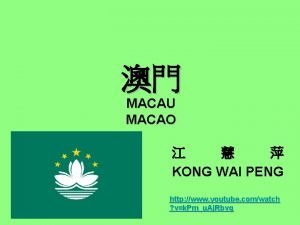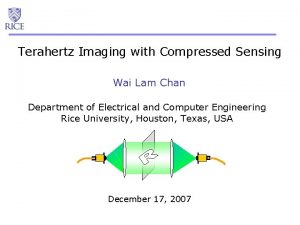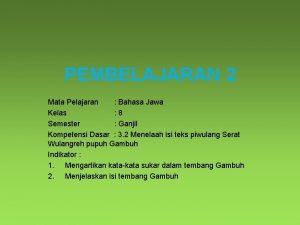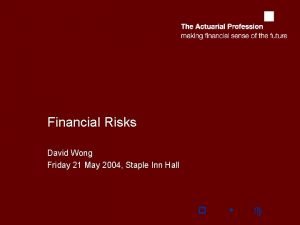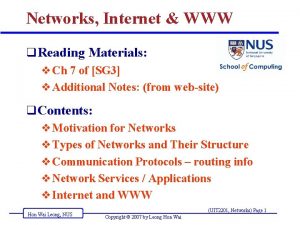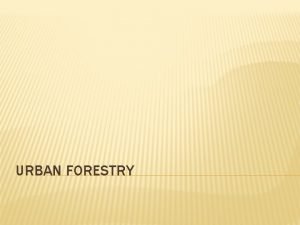The Forgotten Treasure Forestry WONG LAM WAI DAVID













- Slides: 13

The Forgotten Treasure– Forestry WONG LAM WAI, DAVID UID: 2008085991

What is Forestry? �Management of forest resources �Explore, prioritize and optimize the biological, recreational, aesthetic and economic resources in forests �Realize the present value, growth rates, crop rotation and corresponding regulations

Upstream Production Chain

Downstream Production Chain

A big question Does China need wood and timber ?

China needs wood so much! China has a net importer of logs since 1993

Wood Demand from China =>According to the FAO report in 2005, China has approximately 197 m ha of forests, ranking the fifth in the world after Russia, Brazil, Canada and the United States. ÞChina’s forest area per capita is approximately 0. 2 ha, only about one-third of the global average of 0. 6 ha. ÞChina’s forest area accounts for around 21% of total area, compared to the global average of 30%. Thus, China has been a net importer of logs since 1993.

Forestry Industry Revitalization Plan (2010 -2012) In October 2009, the State Forestry Administration (SFA) of China Published the Forestry industry Revitalization Plan (2010 -2012) Ø Market value of the industry to reach RMB 2, 260 b in 2012, up from 1, 440 billion RMB in 2008, targeting a 12% CAGR in the period. Ø Emergence of 100 national-level leading enterprises by 2012 through government support. ØTotal international trade value to reach at least RMB 90 b by 2012, of which export level targeting to recover to 2007 level; to retain the position as the largest exporter of various products including wood-based panels, flooring and furniture.

Corresponding Policy Reduce Forest Maintenance Fees: From 20% of forestry sales revenue to below 10%; Forest Maintenance Fees is paid to the government by forest operators based on the forest they own Enhance credit financing policies forestry industry The State Forestry Administration; going forward, Forestry companies could enjoy more lenient bank credit approval as well as preferential interest rates. Explore the establishment of forest insurance scheme include forest insurance to fall under agricultural insurance, incentivize insurance companies and forest operators to participate in forest insurance and increase insured forest area.

David’s Pick China Forestry (930. HK) Rating : Initiated at OUTPERFORM , TP of ØA new HK listing, yet the largest in terms of market cap ØStraightforward business model with strong cash flow ØRobust earnings outlook. We expect China Forestry’s adjusted (recurring) net income to surge from RMB 242 m in 2008 to RMB 846 m in 2011 F,

Biggest Forestry Company Listed ØAssessed by Chandler Fraser Keating Limited (CFK), an independent forestry consultancy, fair value of China Forestry’s forest assets amounts to RMB 7. 9 b. ØAverage wood yield (in terms of forest stock volume per ha) of China Forestry’s resources are around 200 m 3/ha, significantly higher than the national average of 71 m 3/ha

China catches up with the world

Straight-Forward Business Model Business segment and business model Only engaged in logging activities, with main customers being wood processing factories in China. Most of its products are used in construction, infrastructure and the furniture industries. When the company receives an order, it engages local villages nearby, or some cases professional harvesting teams, to provide harvesting services. Then the customer transports the products away to their factories to conduct further processing. Minimal working capital requirement The company’s business model gives rise to the advantage of minimal working capital. Harvest activities only begin after a customer order, leading to minimal inventory. In addition, as the company only allows customers to retrieve logs upon full payment, accounts receivable is practically zero. Experienced management team China Forestry has been operating in the forestry industry in China since 2003, the same year when the Chinese government announced the No. 9 Policy which set out the directive for the private sector to participate in China’s forestry development.

